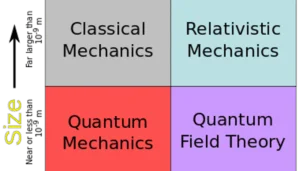One often hears the question, “Is science Western in origin?” This question is often followed by answers which mostly revolve around certain well-known names like Newton, Galileo, Kepler and ancient Greeks like Aristotle, Archimedes and Pluto. But even in ancient times, India had developed extremely well-developed schools of philosophy. For example, the Nyaya philosophy asserts that nothing is acceptable unless it is in accordance with reason and experience, and this is precisely the scientific approach.
So it can be concluded that Science isn’t strictly “Western” in origin. In fact at one time India was leading the world in science. Scholars from Persia and China would come to India to learn from us in our great universities at Taxila, Nalanda, Ujjain etc. as disciples. Ancient Indians made achievements in the fields of astronomy, medicine, metallurgy and architecture which were nothing short of remarkable but it was in one field where they stood out – mathematics. For example, the decimal system was perhaps the most revolutionary mathematical achievement in the ancient world.
The numbers in the decimal system were called Arabic numerals by the Europeans but it is accepted now that these numbers came from India and they were copied by the Arabs from ancient Indians. It is well known that while the Arabs valued the “theology of Aristotle”, for arithmetic, they turned to India, not to Greece. Arabs imported various Indian arithmetic texts, notably those of Aryabhata, Brahmagupta and Mahavira. Baudhayana, who in the 8th century BCE gave the formula for the square root of 2 also composed the Baudhayana Sulba Sutra, which contains examples of simple Pythagorean triples, such as: (3,4,5), (5,12,13), (5,12,13), (8,15,17) etc as well as a statement of the Pythagorean theorem – “The rope stretched along the length of the diagonal of a rectangle makes an area which the vertical and horizontal sides make together.” Madhava of Sangamagrama (c. 1340 – 1425) and his Kerala school of astronomy and mathematics developed and founded mathematical analysis. The infinite series for π was stated by him, and he made use of the series expansion of arctan(x) to obtain an infinite series expression, now known as the Madhava-Gregory series, for pi .

The calculus theorem now known as “Rolle’s theorem” was stated by mathematician, Bhāskara II, in the 12th century. The Indian mathematician Brahmagupta presented what is possibly the first instance of finite difference interpolation around 665 CE. He also had began using abbreviations for unknowns by the 7th century. He employed abbreviations for multiple unknowns occurring in one complex problem. He also used abbreviations for square roots and cube roots. Fibonacci identity, was one of the many things that was discovered by him, several centuries before Fibonacci himself. Aryabhatta in his famous book called the Aryabhatiya wrote about algebra, arithmetic, trigonometry, quadratic equations and the sine table. He calculated the value of Pi at 3.1416, which is close to the actual value which is about 3.14159.
Aryabhatta’s works were later adopted by the Greeks and then the Arabs. He also in his book Aryabhatiya postulated that the earth rotated on its axis. He also considered the motion of the planets with respect to the sun. Brahma Gupta headed the astronomical observatory at Ujjain and wrote a famous text on astronomy, and Bhaskara, who also was ahead of the astronomical observatory at Ujjain. Varahamihira, who described Pascals’s triangle – several centuries before Pascal also presented a theory of gravitation which suggested that there is a force due to which bodies stuck to the earth, and also kept the heavenly bodies in their determined places.
It is remarkable that even today predictions can be made about the time and date of solar and lunar eclipses on the basis of calculations made by the ancient astronomers thousands of years ago, and that too at a time when there were no modern instruments like telescopes etc. and observations had to be made with the naked eye. Its nearly impossible to add two large numbers, for example 1338465 and 48463902 using Roman numerals but it is very easy to add two numbers in the Indian number system, thanks largely to the idea of zero.
Besides Shunya, Indians frequently used numbers like lakh, crore, Arab, kharab etc which are far greater than the largest numbers that even the Romans could think of. Another interesting fact is that much of the work of ancient Indian mathematicians and much of any work in ancient and medieval India is done in Sanskrit which is commonly but incorrectly believed to be a language suitable only for mantras and Hymns. Hence it can be safely stated that India is the birthplace of Basic Mathematics. The achievements of Indian mathematicians in ancient and medieval times was perhaps greater than any other people.
Written by: Rohit Jha




good article
Really ancient Indian mathematics was so developed.
ya obviously….!